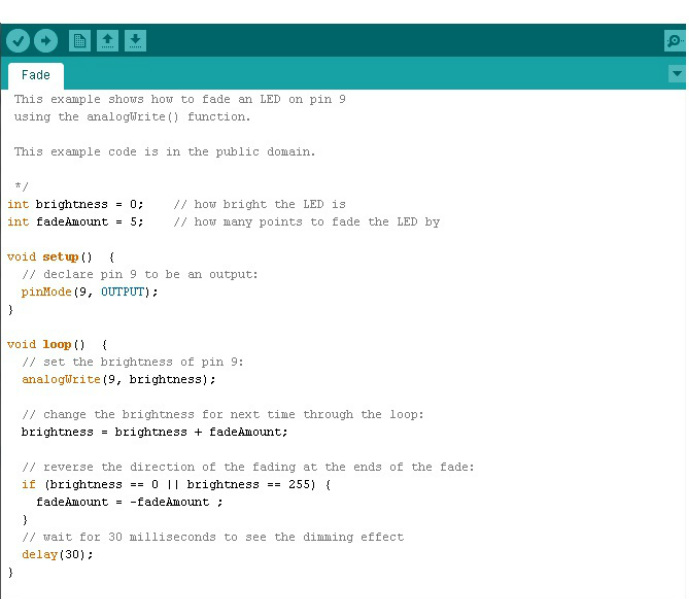
Way, we can increase and decrease the brightness level of an LED. Which was updated as 45 previously will become brightness = 45 - 5 = 40. When we press the fade button a second time the value of brightness We press the fade button the first time the brightness value will be brightness =ĥ0 - 5 = 45. Of incrementing the value of brightness by 5, we will decrement it by -5. When we want to fade the LED then we will same logic instead In the analogWrite() function such as analogWrite(ledpin, In such a way, the brightness value will be passed Will become brightness = 5+5 =10 when we again press the brightness button the third time the value of brightness which was updated as 10 previously willīecome brightness = 10 + 5 = 15.
#Arduino analogwrite function plus
The Arduino Due supports analogWrite() on pins 2 through 13, plus pins DAC0 and DAC1. Older Arduino boards with an ATmega8 only support analogWrite() on pins 9, 10, and 11. On the Arduino Mega, it works on pins 2 through 13. Value of brightness as 0 so when we press the brightness button the first time theīrightness value will be brightness = 0 + 5 = 5, when we press the brightnessīutton a second time the value of brightness which was updated as 5 previously On most Arduino boards (those with the ATmega168 or ATmega328), this function works on pins 3, 5, 6, 9, 10, and 11. Value is HIGH then we will add +5 in brightness. Is there some way to change the frequency of these pins to 490Hz robtillaart January 22, 2014, 6:37pm 2. In the void loop we store the value of the brightness button in the variable nameīright value and the fade button in the variable name fade value. On the analogWrite () reference page ( analogWrite () - Arduino Reference ), it is stated that pins 3 and 11 on the leonardo run at 980Hz PWM, instead of the usual 490Hz. We want to create an LED Light dimmer using a push button so we have declared the brightness value as 0 by default. We have declared a baud rate of 115200, two push buttons as INPUT, and an LED pin as OUTPUT. Here we have declared a led pin and two push button which is connected at pin number 11, pin 9, and pin 8 of Arduino. We have initialized two variables for storing the status of twoīuttons. Simple Automatic LED Light Dimmer using Arduino Set output voltage means power deliver to the load 2.5v means we have to passġ28 in analogWrite(ledpin, 125). analogWrite() takes 0 to 255 integer values whereas in digitalWrite() we can only set the output voltageġ (5v) or HIGH and 0(0v) or LOW. By usingĪnalogWrite() we can easily controlled the output power between 0v to 5vĮxample 1.5v or 2.5v etc. the digital pin having the ~ symbol on Arduino boards is the PWM pin. Only a digital pin having PWM output can access the analogWrite()įunction. analogWrite() functions are not accessibleīy all digital pins. ON or logic 1 whereas digitalWrite(ledpin, LOW) is considered as turn OFF or

digitalWrite(ledpin, HIGH) is considered as turn In digitalWrite() we can assign only 5v (ON) or 0v (OFF). The analogWrite function provides a simple interface to the hardware PWM, but doesnt provide any control over frequency. Output ON or OFF, which means HIGH or LOW. Difference between digitalWrite() and analogWrite() in Arduino?ĭigitalWrite() is used with digital pins (0 to 13) of Arduino toĬonfigure these pins for an output operation.


 0 kommentar(er)
0 kommentar(er)
